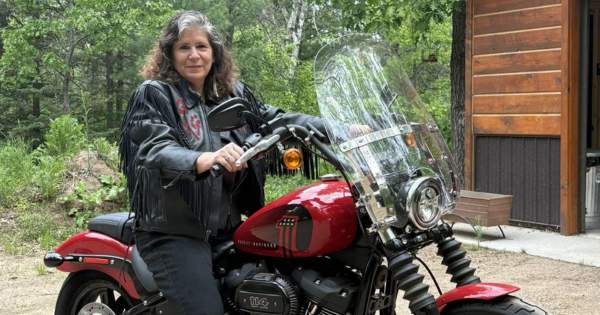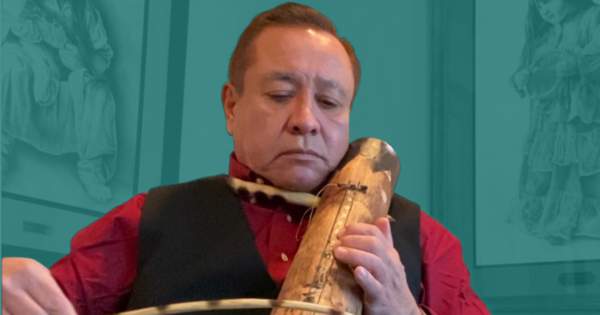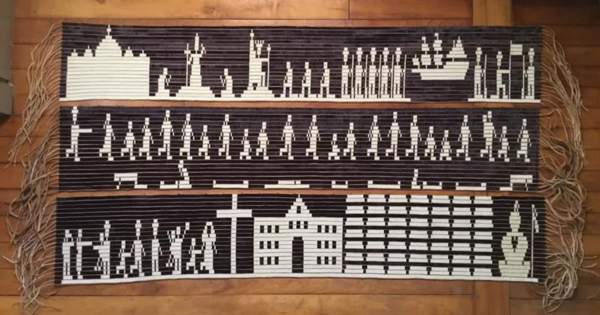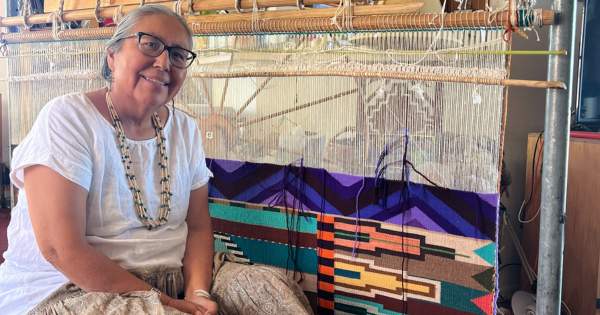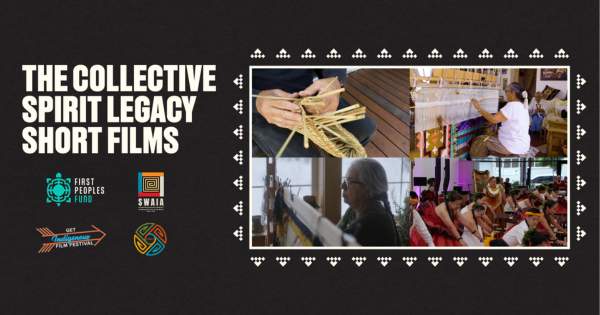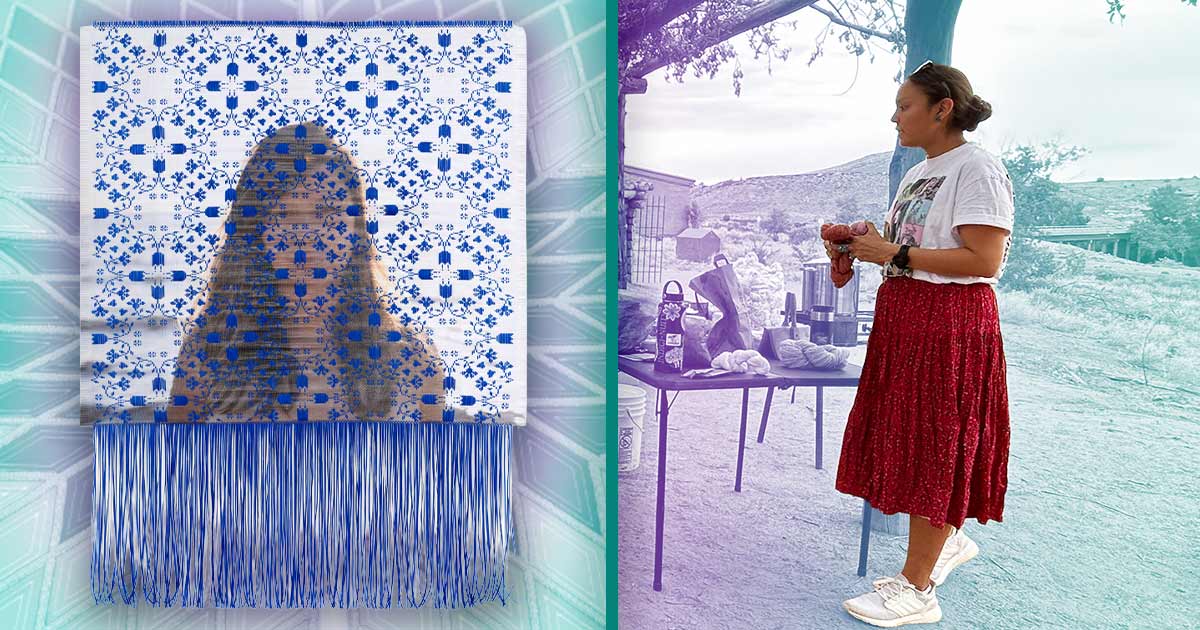
Data Tells Us Stories: The Impact of Our 2018 Fellowships
By Sarah Elisabeth Sawyer (Choctaw Nation), Artist in Business Leadership Fellow 2015
Supporting families, uplifting communities, empowering emerging artists. When an individual receives a First Peoples Fund Artist in Business Leadership (ABL) Fellowship or Cultural Capital (CC) Fellowship, they are given the opportunity to start a new project or bolster a current one. This impact on their artist career comes through in the data we gather and track throughout each fellow’s year.
In 2018, First Peoples Fund (FPF) supported 15 ABL fellows and 10 CC fellows. Becky Monnens, our Story Tracker/Data Analyst, sorted through the extensive data we collected to help us understand the impact of the fellowship on these 25 artists and culture bearers. Combined with our previously published research on the 6 Resources Artists Need to be Successful, Becky was able to identify not only encouraging data but also the beautiful stories of what our fellows accomplished and experienced throughout the year.
IMPACT ON 2018 ARTIST IN
BUSINESS LEADERSHIP FELLOWS
Creative Space
Fox Spears’ (Karuk) primary medium is monotype printmaking. Using hand-cut stencils and layers of ink on paper, he creates images inspired by Karuk basketry designs. Through his fellowship, Fox purchased a small print press he uses at home and in workshops, where he provides creative space and inspiration for himself and other artists to find their voice.
Having creative space –– both the physical space to work in and space within their daily schedules –– helped fellows elevate their ability practice their art through the course of their fellowship year. 80% of fellows spent 20+ hours per week on their art, up from 60% before the fellowship year.
Markets
Able to move beyond saturated local markets, 47% of ALB fellows increased their travel to sell their work or were able to book performances in new market areas.
Pauline Klementson (Yup’ik) is a master seagrass weaver from Nome, Alaska, is a wonderful example of how the fellowships can increase an artist’s access to markets. Throughout the year she developed relationships to strengthen and grow her art business, from working with grass harvesters to local and statewide retail outlets.
“I was able to meet new artists, share my art and express how important it is to share our stories and our culture,” she says.
Raye Zaragoza’s (O’odham, Mexican, Taiwanese and Japanese) was able to share her stories with new markets as well, with 2018 being her first year as a full-time musician. She launched the year with a tour in Germany and continued touring throughout the United States. “I was in higher demand,” she says
Supplies and Materials
Seven of the fellows had difficulty accessing supplies or materials at the beginning of the fellowship year. Five of these seven increased access to supplies and materials through their fellowship.
Heidi K Brandow (Native Hawaiian/Diné) is a painter and printmaker. The funding helped her upgrade her home art studio. “First Peoples Fund has been fundamental in allowing me to get the materials and tools I need to have a more streamlined process,” she says.
Income from Art
Traci Sorell (Cherokee Nation) writes fiction and nonfiction for children featuring contemporary characters and compelling biographies. She leveraged her fellowship to launch her debut book, “We Are Grateful: Otsaliheliga,” released by Charlesbridge Publishing.
“I had the support of First Peoples Fund to assist with marketing, brand development, and travel to present at conferences and schools,” she says. “This benefitted my art tremendously.”
53% of ABL fellows increased the percent of income from their art, earning an average of 60% in art, compared to 49% prior to their fellowships.
Additionally, seven artists implemented a change in their financial systems and tools by budgeting, creating separate bank accounts for their art business, and using software for invoicing clients.
Networks
All 15 ABL fellows increased their networks and strengthened relationships within existing networks.
Jaida Grey Eagle’s (Oglala Lakota) primary mediums are photography and filmmaking, but she also practices beadwork. During her fellowship year she began her beadwork with B.Yellowtail, the company created by 2015 ABL Fellow, Bethany Yellowtail (Northern Cheyenne/Crow). The company focuses on “providing an empowering, entrepreneurial platform for Native peoples.”
“As Native artists, we tend to undersell ourselves. Bethany [Yellowtail] is trying to change that narrative we hold ourselves and others to,” she says. “I believe setting this precedent within the Native community — that we can ask for higher prices for our time and energy — will help remove that barrier of underselling our creations.”
IMPACT ON 2018 CULTURAL CAPITAL FELLOWS
While entrepreneurial growth is a key goal of our ABL fellowship, for the CC fellowship is focused on expanding cultural impact — how these artists share their wealth of knowledge more widely through the fellowship. That, in turn, elevates their visibility and respect as artists in their communities.
Wesley May (Red Lake Band of Chippewa) is from the Red Lake Indian Reservation. As Wesley continues his journey as a full-time artist, his work in communities is raising awareness for his business, Wesley May Arts. With his fellowship funds, Wesley bought supplies for five mural workshops, ultimately completing fifteen message murals with communities and youth across the country in North Carolina, Wisconsin, Minnesota, and New Mexico.
Artistic Practice and Intergenerational Transfer of Knowledge
Matilda Wilson (Hat Creek Atsugewi Band of the Pit River Tribe) says she involved multiple generations “from five to 75 years old — grandmas, aunts, sisters, cousins, and nieces as well as grandchildren — in gathering the raw materials — chokecherry, gray/red willows — in making and creating our cultural and traditional cradleboards.”
At the beginning of the fellowship year, six CC fellows reported a total of 40 family members engaged in their art and cultural practices. By the end, the number increased to over 62 family members.
“From five to 75 years old — grandmas, aunts, sisters, cousins, and nieces as well as grandchildren — in gathering the raw materials — chokecherry, gray/red willows — in making and creating our cultural and traditional cradleboards.”
— Matilda "Tillie" Wilson (Hat Creek Atsugewi Band of the Pit River Tribe)
Putting Values into Practice, Giving Back and Mentoring Other Artists
While nine of ten fellows gave back to their communities by mentoring other artists previously, FPF’s support extended their reach through workshops and mentorships on a larger scale. Through the fellowship year, CC fellows conducted 87 community workshops in their art forms.
Kandi McGilton (Metlakatla Indian Community) is a modern Tsimshian artist in southeast Alaska.
“Through the FPF grant, I was able to bring awareness to my community about our unique weaving style,” she says. “That awareness has branched out to neighboring communities such as Ketchikan and Juneau.”
TRACKING THE STORIES
The data from fellows helps us know more about their successes, and their needs, for stronger programming going forward.
“I’m grateful to these artist fellows for sharing their outcomes,” Becky says. “It’s wonderful for them to share that time and knowledge with us.”

